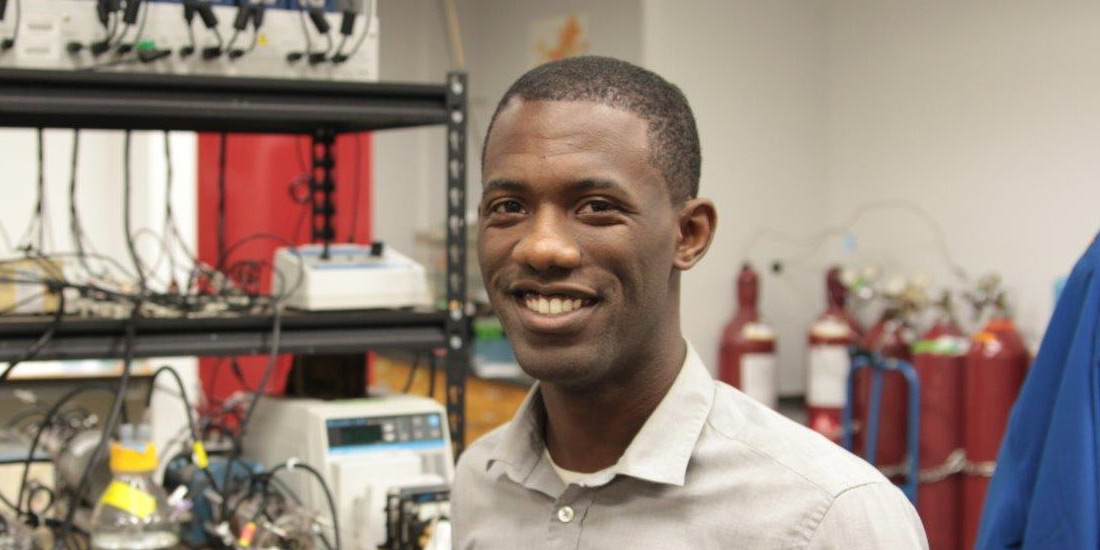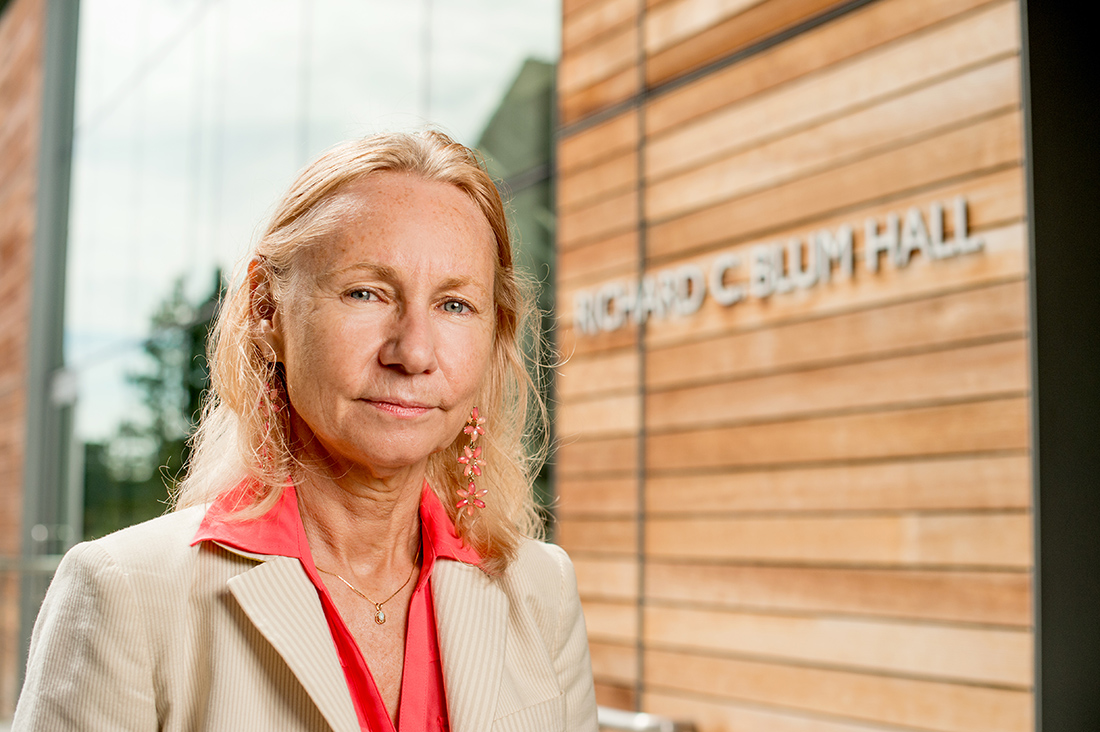 William Tarpeh at the Berkeley Water Center. (Photo by Daniel McGlynn)
William Tarpeh at the Berkeley Water Center. (Photo by Daniel McGlynn)Defining development engineering
Today, 1.2 billion people live in extreme poverty — defined as subsisting on the equivalent of $1.25 a day or less. The United States Agency for International Development (USAID) has set a goal to drastically reduce that number by 2030.
Now, a new research field taking root at Berkeley — development engineering — may just help USAID meet this goal.
Earlier this year, USAID launched the Global Development Lab to create new strategies and technologies targeting education, food security, child survival and access to renewable energy that can be quickly developed, evaluated and scaled. As an umbrella organization, the global lab is partnering with technology incubators and sponsoring design competitions to find solutions to specific development challenges.
In a pilot program in late 2012, USAID awarded Berkeley $20 million to establish the Development Impact Lab (DIL), jointly based at the Blum Center for Developing Economies and at the Center for Effective Global Action (CEGA), both campus-based research hubs.
The Development Impact Lab funds a portfolio of faculty and student research, hosts discussions and lectures and supports the growing community of faculty and students interested in development engineering. Development engineers elude easy definition, but they are trained as multi-tooled tacticians creating holistic solutions to technical challenges that are interlaced with social and political complexities.
 Mechanical engineering professor Alice Agogino chairs the new development engineering graduate group. (Photo by Noah Berger)“Development engineering is a new interdisciplinary field that integrates engineering with economics and business, energy and natural resource development and social sciences,” says Alice Agogino, a professor of mechanical engineering. “The goal is to create, implement and evaluate new technologies to benefit people living in poverty in developing regions and low-income areas in the U.S.”
Mechanical engineering professor Alice Agogino chairs the new development engineering graduate group. (Photo by Noah Berger)“Development engineering is a new interdisciplinary field that integrates engineering with economics and business, energy and natural resource development and social sciences,” says Alice Agogino, a professor of mechanical engineering. “The goal is to create, implement and evaluate new technologies to benefit people living in poverty in developing regions and low-income areas in the U.S.”
To build an academic framework for this new field, Berkeley faculty members with research expertise in related areas formed a development engineering graduate group last year. The group is establishing a research agenda that includes human-centered design and requires innovators to develop “multiple skills in ethnographic studies, qualitative research, hardware, analytical tools, hypothesis testing, prototyping, business model development and continuous impact analysis,” says Agogino, who chairs the group.
With the support of the Blum Center, the group launched a designated emphasis in development engineering for doctoral students this fall. The specialization is open to Ph.D. candidates across campus, including students pursuing research in social sciences with quantitative components, such as public health or social welfare. The faculty members organizing the designated emphasis come from the College of Engineering, the School of Information, Haas School of Business, School of Public Health and the College of Natural Resources.
“A number of faculty were engaged with the DIL lab and students doing these projects, but as one-offs in various groups without mentoring outside their discipline,” Agogino says. “The creation of this multidisciplinary program was a natural fusion coming from a compelling need.”
There are two required courses. The first, which Agogino is co-teaching this semester with business professor David Levine, is called “Design, evaluate and scale development technologies.” The second is a seminar on research and practice, which will feature project presentations by development experts and a review of students’ research. Students will also choose three electives (only one of which can be taken in their home department) on project design, technology development, or evaluation technologies and methods for measuring social impact.
The first class in the emphasis was quickly overenrolled, reflecting the high demand for training in this new field. William Tarpeh, an environmental engineering Ph.D. student who is creating technologies to capture nitrogen from urine, is one of the first students in the program.
“One of the boxes I needed to check when choosing a grad program was combining lab work and fieldwork,” says Tarpeh, who is also interested in building markets for disinfectant and fertilizer made from the nitrogen as a means to increase toilet proliferation in developing economies. “The other was combining engineering with development.”
“The designated emphasis is really meaningful,” Tarpeh says, “because it recognizes the interstitial space that otherwise just isn’t recognized.”